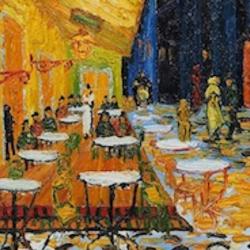To celebrate the centenary of Jane Jacobs’s birth, Adam Gopnik devotes a New Yorker piece to the lyricist of the American city. Gopnik finds that her classic, Death and Life of Great American Cities “is still astonishing to read, a masterpiece not of prose—the writing is workmanlike, lucid—but of American maverick philosophizing, in an empirical style that descends from her beloved Franklin. It makes connections among things which are like sudden illuminations, so that you exclaim in delight at not having noticed what was always there to see. A celebration of the unplanned, improvised city of streets and corners, Jacobs’s is a landscape that most urban-planning rhetoric of the time condemned as obsolete and slummy, something to be replaced by large-scale apartment blocks with balconies and inner-courtyard parks.”
Jacobs argued that “Corbusian super blocks tended to isolate their inhabitants, depriving them of the eyes-on-the-street crowding essential to city safety and city joys.” She pointed out that “on richer blocks, a whole class of eyes had to be hired to play the role that, on Hudson Street, locals played for nothing: ‘A network of doormen and superintendents, of delivery boys and nursemaids, a form of hired neighborhood, keeps residential Park Avenue supplied with eyes.’” A hired neighborhood, full of hired eyes.
Gopnik says that two principles guided Jacobs: “First, cities are their streets. Streets are not a city’s veins but its neurology, its accumulated intelligence. Second, urban diversity and density reinforce each other in a virtuous circle. The more people there are on the block, the more kinds of shops and social organizations—clubs, broadly put—they demand; and, the more kinds of shops and clubs there are, the more people come to seek them.”
For Gopnik, her “book is really a study in the miracle of self-organization. . . . Without plans, beautiful shapes and systems emerge from necessity. Where before her people had seen accident or exploitation or ugliness, she saw an ecology of appetites.”














